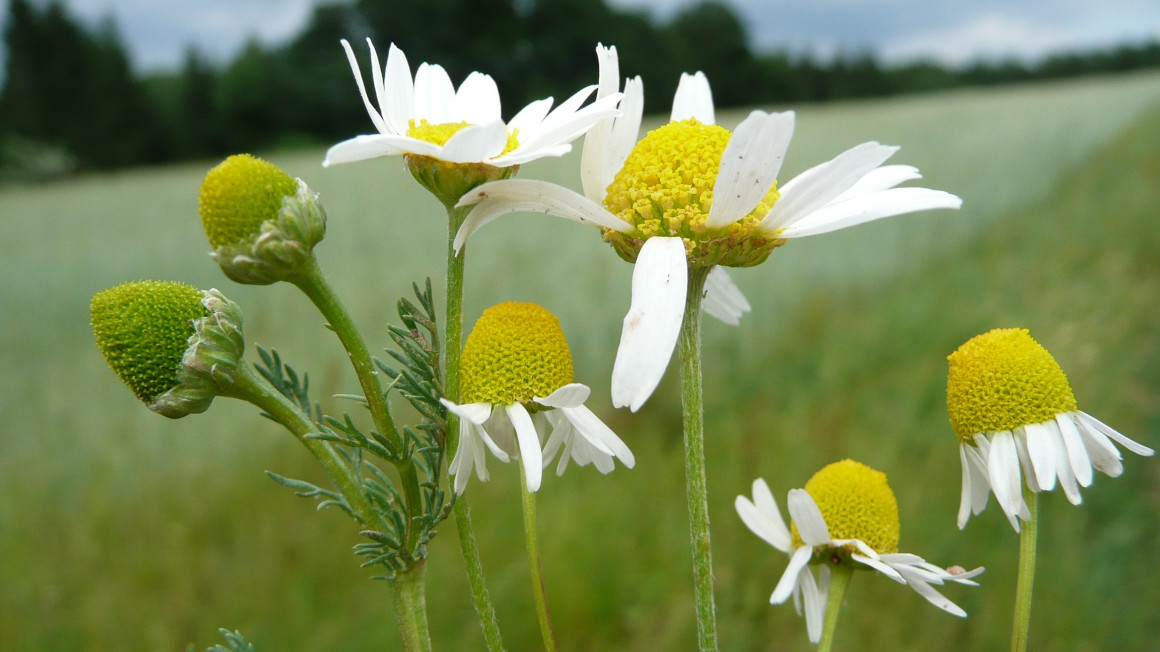Plant diversity keeps weeds in check
Growing a variety of crops in the field can prevent unwanted weeds from spreading and reducing yields.

Weeds are a problem for many farms. In conventional farming, heavy equipment and pesticides are used to try to kill the unwanted plants or keep them in check. In organic farming, no chemicals are used. Here, the weed problem is solved mechanically or thermally. But even this method is not ideal: it is often expensive and can also disturb soil organisms and promote erosion. Researchers at the University of Rostock have now taken a closer look at weed vegetation in Mecklenburg-Vorpommern (MV) in a large-scale field trial. Eleven organic farms from MV were involved. The project, initiated by the University of Rostock, was part of an international research project on the diversity of plant stands and weeds involving researchers from Denmark, Sweden, Finland, Latvia and Poland.
There are about 300 species of weeds in Germany. Of these, 25 are really problematic, such as Canada thistle. It spreads underground in nests and ensures a lower yield. However, about 100 weed species occur rather rarely, and some - such as farmer's mustard or lambs lettuce - are even endangered.
How diversity works against weeds in organic farming
The researchers' idea was to replace mechanical methods with many small individual measures in weed control. These include, for example, the cultivation of different crops, catch crops or mixtures of species and varieties. The project therefore investigated in field trials what contribution these gentle cultivation measures can actually make to weed control in organic farming. The focus was on fields cultivated with summer cereals on which undersown crops, catch crops or species and variety mixtures were also sown.
Low plant density in weeds has many advantages
It was shown that "direct mechanical weed control primarily reduces weed density. Long-term crop diversification, i.e. wide crop rotations or intercropping, on the other hand, tends to promote weed species diversity," says Bärbel Gerowitt, summarizing the results of the field trials in MV. However, it is crucial that the plant density is not too high, because only in this way does a species-rich field vegetation have advantages. Weeds can then also be a source of food and habitat for beneficial insects, says Gerowitt.
Species-rich vegetation keeps weeds in check
The field trials showed that in species-rich field vegetation, problematic subweeds such as Canada thistle never occur in large quantities. That's because there's only room for small amounts of each species. "These include weed species that everyone knows: corn poppy, cornflower, chamomile, knotweed species, spurge or shepherd's purse," says Gerowitt, who initiated the project. Not only in Germany, but also in the other participating countries, the integration of catch crops into crop rotation proved to be particularly effective for farmers. "The studies in Finland, Latvia, Sweden, Denmark, Poland and Germany show the range of cultural measures and the different perception of weeds," says Bärbel Gerowitt. The project also showed that species richness is desirable. All the organic farms involved in the trial agreed that weeds are an important food source for insects, which they value and no longer just want to control. "Because diversity in the field keeps the weeds in check," Gerowitt sums up.
bb


